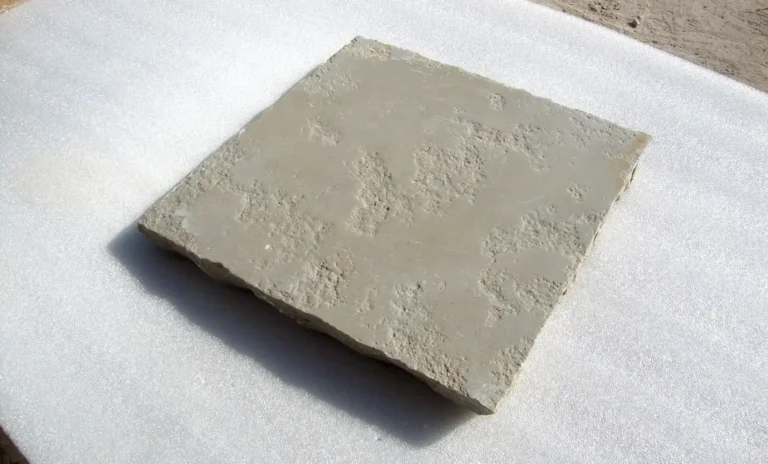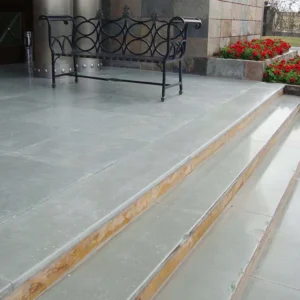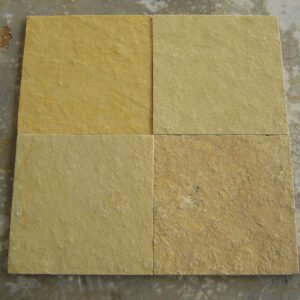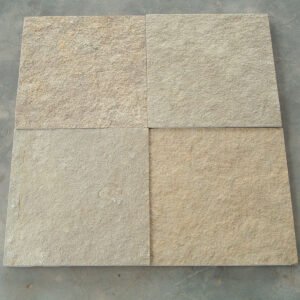Also called Tandur Yellow Stone, Shabad Yellow Limestone, and Yellow Tandur, Tandur Yellow Limestone is considered one of the most popular architectural stones all over the world. This natural is widely known for its sophisticated beauty, great toughness and an ability to spruce up any kind of surrounding.

India is known to be a hub of different varieties of natural stones and limestone is one of them. Whenever it comes to adding value to any landscaping or paving project, limestone emerges as the most sought-after choice among garden pavers, architects, landscapers, and construction contractors.
What is limestone?
Limestone refers to a sedimentary rock made up primarily of calcium carbonate (CaCO3) in mineral calcite form. Nearly 10% of sedimentary rocks in India are limestone and a majority of cave systems are made up of limestone bedrock.
 The two major ingredients of limestone include calcite and dolomite. Limestone sometimes contains magnesium carbonate, in the form of dolomite CaMg (CO3) 2 or magnesite (MgCO3) combined with calcite. Such rocks are called ‘dolomitic’ or ‘magnesian’ limestone. Limestone modified by vibrant or contact metamorphism turns into crudely crystalline and are known as ‘marble’ and ‘crystalline limestone’.
The two major ingredients of limestone include calcite and dolomite. Limestone sometimes contains magnesium carbonate, in the form of dolomite CaMg (CO3) 2 or magnesite (MgCO3) combined with calcite. Such rocks are called ‘dolomitic’ or ‘magnesian’ limestone. Limestone modified by vibrant or contact metamorphism turns into crudely crystalline and are known as ‘marble’ and ‘crystalline limestone’.
Other typical variants of limestone are ‘marl’, algal limestone, oolitic limestone, shelly limestone coral limestone, hydraulic limestone, crinoidal limestone, travertine, onyx, hydraulic limestone, lithographic limestone, etc. However, the limestone that is utilized by commercial firms in large quantities is considered as a bedded category sedimentary limestone.
Why Tandur Yellow Limestone is the most sought-after architectural material
– Widely used for landscape designing
– Extremely resistant to frost
– Doesn’t lose its color on prolonged exposure
– A great material for wall cladding, flooring, and paving
Mining of Tandur Yellow Limestone in India
The overall deposits/resources of limestone of all classes and scores has been estimated at 2,03,224 million tonnes in India as of 2015. Karnataka is the top-most state with 27% of the total resources trailed by Andhra Pradesh & Rajasthan (12% each), Gujarat (10%), Meghalaya (9%), Telangana (8%) and Chhattisgarh & Madhya Pradesh.
Now when it comes to finding deposits of Tandur Yellow Limestone in India, Telangana state is known to have the most reserves of this limestone.
The high quality of Indian limestone make it a popular construction stone in different parts of the world. It tends to last long without heavy maintenance which means once installed, it remains in an immaculate condition for years to come. This might be the reason why B2B buyers in different parts of the world prefer limestone from India for a wide range of applications.
Processing Unit
At this level, limestone is treated for further stages by using different types of technological processes. For instance, specialized machinery is used to smoothen its edges. Likewise, different tools and procedures have been employed to apply a particular surface finish on its surface
The typical processing of Tandur Yellow Limestone starts with primary cutting, followed by the application of a finish, and auxiliary cutting or shaping.
When it comes to cutting and shaping the Tandur Yellow Limestone, cutting and calibration machines are used at our processing units. Likewise, for brushing and polishing tasks, distinctive machines are employed. For minor changes, small hand-held tools like axes and mauls are used. No matter which types of construction project it is, a majority of Indian limestone exporters provide typical and custom dimension limestone tiles to B2B buyers all across the globe.
Finished Material
The main area where the diversity can be obtained in Tandur Yellow Limestone is its surface texture. This is done by applying a finish on it.
Once the precise cutting and surface polishing of this yellow limestone are done, it is further divided into various shapes and sizes to meet the exact specifications of the project. Mostly, this limestone is used in the form of tiles.
Tiles: 30 x 30, 60 x 60, 60 x 90 and 60 x 120 cm with thickness 2 cm, 3 cm, 4 cm, 5 cm or 6 cm
Finishes
Tandur Yellow Limestone can be treated to achieve a number of finishes which simply means that the buyers always have the option to choose the best matching finish for their project. The final finish and surface texture of this limestone or any other natural stone largely depends on the precise needs of the buyers and the proposed application. A majority of natural stone suppliers and exporters in India make the use of next-gen machinery and tools to apply the required finish on the stone’s surface. Some of the popular limestone finishes are:
– Natural calibrated machine cut (MC) tumbled
– Natural calibrated hand-cut (HC) tumbled
– Honed calibrated machine cut (MC) tumbled
– Honed calibrated hand-cut (HC) tumbled
– Natural + brushed calibrated machine cut (MC)
– Natural + brushed calibrated hand-cut (HC)

Installation
Besides being a durable material, Tandur Yellow Limestone exhibits superb hardness and weathering-resistance. This limestone can easily be obtained in almost any quantity from India, buyers remain confident of getting high quality product at the most competitive rates.
In India, the production output of limestone was at 338.55 million tonnes in 2017-18 which was a surge of nearly 7.59% from the previous year. This limestone is widely used in the Southern state of Telangana in India. However there are other varieties of limestone also available through the country. If you are you looking to import limestone from India, you can choose from a wide range of varieties that are of high quality.
